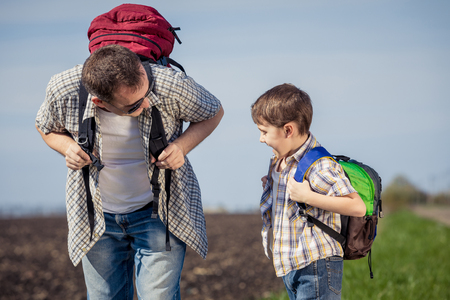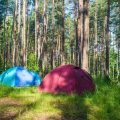Introduction to Foraging in the British Countryside
Foraging has been woven into the fabric of British life for centuries, serving as both a practical means of survival and a cherished cultural pastime. In the rolling hills, ancient woodlands, and hedgerows of the UK, generations have gathered wild foods—mushrooms, berries, nuts, and herbs—each season bringing its own edible treasures. This tradition is more than just sourcing food; it is a way to connect with the land, appreciate its natural cycles, and pass down vital knowledge through families and communities. Introducing children to foraging in the British countryside opens up a world of adventure and learning: they develop an understanding of native plants and wildlife, learn responsible harvesting practices, and foster a lifelong respect for nature. Beyond acquiring practical skills, young foragers benefit from being outdoors, building confidence and curiosity while exploring their local environment. Today, foraging continues to thrive in Britain, blending historical roots with modern educational activities that spark wonder and discovery for children of all ages.
Preparing for Your Foraging Adventure
Setting out to forage with children in the British countryside is both exciting and educational, but preparation is key to ensuring a safe and enjoyable experience. Whether youre venturing into ancient woodlands, wildflower meadows, or along rugged coastal paths, careful planning will make your family adventure smooth and memorable.
Essential Items to Pack
| Item | Purpose |
|---|---|
| Sturdy footwear | Protects feet on uneven terrain |
| Weather-appropriate clothing | Keeps everyone comfortable (think layers and waterproofs) |
| Foraging baskets or cloth bags | Safely carry collected finds without damaging them |
| Identification guides/books | Helps distinguish edible from inedible plants and fungi |
| Pocket magnifier or loupe | Aids in examining plants closely—great for curious children! |
| Reusable water bottles and snacks | Keeps energy up during long walks |
| First aid kit | Preparedness for minor scrapes or stings |
| Sunscreen and insect repellent | Protection against sunburn and midges/ticks, especially in summer months |
| Pencils and notebooks | Encourages note-taking, sketching, and observation skills |
| Mobile phone (fully charged) | For navigation, emergencies, or taking photos of finds |
Safety Guidelines for Family Foraging
- Stick together: Always keep children within sight. British woodlands can be dense, and its easy for little explorers to wander off.
- No tasting without checking: Teach children never to eat anything unless an adult has positively identified it as safe. Many British plants look similar but can be toxic.
- Avoid busy roads: Choose foraging locations well away from traffic for peace of mind.
- Respect wildlife and habitats: Remind children not to disturb nesting birds or pick protected species (refer to local guidelines such as those from The Woodland Trust).
Navigating British Landscapes with Children
The UKs varied landscapes each come with their own considerations. In woodlands, look out for slippery roots and low-hanging branches; in meadows, check for ticks after your walk; along the coast, be mindful of tides and unstable cliffs. Before heading out, check the weather forecast—British weather can change rapidly—and let someone know where you’re going if you’re venturing far from home.
A Final Checklist Before You Go:
- Check local regulations on foraging—some areas may have restrictions.
- Plan your route and agree meeting points if the group splits up.
- Familiarise yourself with common poisonous species found in your area (like hemlock or deadly nightshade).
- Ensure all mobile phones are fully charged and consider carrying a paper map as backup.
A well-prepared outing not only keeps everyone safe but also allows children to focus on the joys of discovery. With a little forethought, your family’s foraging adventure in the British countryside will be both safe and inspiring.

3. Seasonal Wild Edibles and How to Identify Them
Foraging with children in the British countryside offers a wonderful opportunity to connect with nature while learning about the seasonal abundance of wild foods. Britain’s hedgerows, woodlands, meadows, and coastal paths are home to an impressive variety of edible plants, berries, mushrooms, and seaweeds. However, safe identification is essential when foraging with young explorers. Below is a practical guide to some common wild edibles you can find throughout the year, along with tips on how to spot them safely.
Spring Foraging: Fresh Greens and Early Blooms
Springtime brings a burst of edible greenery perfect for family forays. Wild garlic (Allium ursinum), often found carpeting damp woodlands, is easily identified by its broad leaves and distinctive garlicky aroma. Nettles (Urtica dioica) are another spring staple; wear gloves when picking the tender tops and cook them to remove the sting. Look out also for dandelion leaves (Taraxacum officinale) in open grassland – their jagged leaves are slightly bitter but nutritious in salads.
Summer Foraging: Berries and Blossoms
As summer unfolds, hedgerows come alive with sweet rewards. Elderflowers (Sambucus nigra) bloom in early summer; their flat-topped clusters of creamy white flowers make fragrant cordials. Later, look for wild strawberries (Fragaria vesca) and raspberries (Rubus idaeus), both smaller than cultivated varieties but bursting with flavour. Always check that berries are fully ripe and positively identified, as some wild berries are toxic.
Autumn Foraging: Fruits and Nuts
The autumn countryside is a treasure trove of wild fruits. Blackberries (Rubus fruticosus) are perhaps the most iconic British foraged fruit, found in bramble thickets from late August onwards. Sloes (Prunus spinosa), the small dark fruit of the blackthorn bush, are famously used in sloe gin but must be picked after the first frost to mellow their tartness. Young foragers can also gather hazelnuts (Corylus avellana), though these are often claimed early by squirrels!
Mushrooms: A Cautious Introduction
Mushroom hunting is exciting but requires extra vigilance due to poisonous lookalikes. The safest choices for beginners include field mushrooms (Agaricus campestris), recognised by their white cap and pink gills that turn brown as they mature, and giant puffballs (Calvatia gigantea), which can be as large as a football and have pure white flesh inside when young. If in doubt, consult a reputable field guide or join a local foraging group before sampling any wild fungi.
Coastal Foraging: Seaweeds and Shoreline Treats
Brittany’s coastline yields edible seaweeds such as dulse (Palmaria palmata), which has reddish fronds and a mild taste, and sea lettuce (Ulva lactuca), bright green sheets often found at low tide. These can be gently rinsed and added to soups or salads. Always ensure you are collecting from clean waters away from pollution sources.
Essential Safety Tips for Family Foraging
- Treat all unknown plants with caution—if unsure, don’t pick or eat it.
- Avoid foraging near busy roads or sprayed farmland.
- Praise children’s curiosity but reinforce the importance of checking identifications together.
- Take only what you need and leave plenty for wildlife.
This practical approach not only ensures safety but also nurtures children’s respect for nature’s cycles—a skillset that will serve them well on every British countryside adventure.
4. Engaging Educational Activities for Young Foragers
Encouraging children to learn through hands-on experiences is at the heart of foraging adventures in the British countryside. Creative educational activities not only spark curiosity but also help children form a lasting connection with nature. Below are practical and enjoyable ideas for making every outing a learning opportunity.
Plant Identification Games
Turning plant identification into a game can motivate children to observe their surroundings closely. One effective method is the “Leaf Bingo” game, where each child receives a card with illustrations or names of common local plants, such as nettles, dandelions, or elderflowers. As they explore, they tick off each plant they find. This approach develops both observation skills and botanical knowledge in a playful manner.
Sample Plant Identification Game Table
| Plant Name | Description | Tick When Found |
|---|---|---|
| Nettle | Serrated leaves, stinging hairs | ☐ |
| Dandelion | Yellow flower, toothed leaves | ☐ |
| Elderflower | Creamy white clusters on shrubs | ☐ |
Storytelling Inspired by Nature
After a forage, gather the children for storytelling sessions under an old oak or beside a bubbling brook. Encourage them to weave tales about the plants and animals theyve discovered—perhaps imagining what it would be like to be a hedgehog rustling in the undergrowth or an ancient tree watching generations pass by. This fosters creativity and helps children appreciate the interconnectedness of countryside life.
Nature Journaling: Recording Discoveries
A nature journal provides a space for children to draw, write, and reflect on their countryside adventures. Supply them with pencils, coloured pens, and perhaps a magnifying glass for detailed sketches. Encourage entries that include leaf rubbings, pressed flowers (collected sustainably), or short poems inspired by their finds. Over time, this personal record becomes both a cherished keepsake and an educational resource.
Nature Journal Prompt Ideas
| Prompt | Purpose |
|---|---|
| Sketch your favourite wildflower today. | Develops observation and drawing skills. |
| Write about an animal you saw or heard. | Encourages mindfulness and descriptive writing. |
| Create a map of your foraging route. | Introduces basic mapping and spatial awareness. |
The Value of Playful Learning Outdoors
By integrating these creative activities into foraging trips, adults can nurture curiosity, resilience, and respect for the environment among young participants. The British countryside offers endless inspiration—whether it’s spotting bluebells in spring woods or listening to skylarks above open fields. Through games, stories, and journals, each adventure becomes more than just a walk; it’s an immersive learning experience that roots children in the wonder of their local landscape.
5. Responsible Foraging and Protecting Nature
When foraging with children in the British countryside, it is essential to adopt responsible practices that protect both nature and our future opportunities to enjoy it. Teaching young explorers about sustainable foraging begins with understanding what, where, and how much to pick. Always take only what you need, leaving enough for wildlife and other foragers. It’s crucial to avoid rare or endangered plants; instead, focus on abundant species such as blackberries, wild garlic, or elderflowers.
Respecting Wildlife and Habitats
Wild places are home to countless creatures—from nesting birds to shy mammals—so tread lightly and stick to established paths wherever possible. Encourage children to observe insects and animals from a distance and never disturb nests, burrows, or habitats. Remind them that every log or patch of brambles can be a shelter for wildlife.
Following the Countryside Code
The UK’s Countryside Code offers clear guidance: leave gates as you find them, take litter home, and keep dogs under close control. Never uproot plants unless you have landowner permission; most wild plants are protected by law. If you’re unsure about a plant’s conservation status or edibility, it’s best to leave it be.
Building Lifelong Respect for Nature
Responsible foraging is more than just a set of rules—it’s about nurturing a deep respect for the land and its ecosystems. By modelling these best practices, adults can inspire children to become thoughtful stewards of the countryside. Through mindful exploration, we ensure that Britain’s wild spaces remain vibrant and accessible for generations of curious adventurers to come.
6. Recipes and Crafts with Foraged Finds
One of the most rewarding aspects of foraging with children is returning home to transform your wild harvest into delicious recipes and creative crafts. The British countryside offers a seasonal bounty—think blackberries, elderflowers, wild garlic, sloes, and nettles—all perfect for simple family-friendly projects. Cooking together not only encourages healthy eating but also provides an opportunity to pass down traditional knowledge.
Simple British Recipes
Start with easy classics such as blackberry and apple crumble or elderflower cordial. These recipes are ideal for little hands: children can help wash, weigh, and mix ingredients. Wild garlic pesto is another favourite in spring, paired beautifully with pasta or fresh bread. For a sweet treat, try making sloe gin (for adults) or sloe syrup (for the whole family), which can be drizzled over porridge or pancakes.
Herbal Teas
Gathering herbs like mint, lemon balm, or chamomile opens the door to homemade herbal teas. Dry the leaves on a sunny windowsill and store them in airtight jars. Let your children blend their own tea mixes—an excellent way to explore flavours and learn about plants’ uses in British folk traditions.
Nature-Inspired Crafts
Beyond the kitchen, foraged materials inspire a range of crafts. Press wildflowers to make bookmarks or greeting cards; create natural dyes from berries; or weave willow and grasses into simple decorations. Building bug hotels from twigs and pinecones is a brilliant hands-on activity that supports local wildlife while fostering creativity.
A Note on Safety and Sustainability
Always supervise children during food preparation and crafting, especially when using unfamiliar plants. Teach respectful foraging: never pick more than you need and always leave some for wildlife and future growth. By combining cooking, crafting, and conservation, you’ll nurture both curiosity and care for the countryside in young explorers.
7. Further Resources and Foraging Groups in the UK
Embarking on foraging adventures with children often sparks a deeper curiosity about wild food, plant identification, and sustainable practices. Fortunately, the UK offers a wealth of resources to help families continue their journey beyond the initial countryside walks. Below is a curated selection of books, organisations, and online communities that can support your family as you become more involved in the British foraging scene.
Recommended Books for Families
“The Forager’s Calendar” by John Wright: An accessible month-by-month guide to what’s available throughout the year, written with British habitats in mind.
“Wild Food: A Complete Guide for Foragers” by Roger Phillips: A classic reference featuring clear photographs—excellent for children and adults alike.
“The Little Forager’s Handbook” by Adele Nozedar: Specifically created for young explorers, this book offers simple language and beautiful illustrations.
Local Organisations and Guided Walks
The Association of Foragers (AoF): This professional network lists qualified foraging instructors across the UK who offer child-friendly walks and workshops.
Wild Food UK: Hosts regular events and courses suitable for families, helping both beginners and more experienced foragers deepen their knowledge safely.
The Woodland Trust: Provides educational materials, free downloads, and regular family events in woodlands across Britain.
Online Communities and Forums
Facebook Groups: Communities such as “UK Foraging” or “British Wild Food & Foraging” are welcoming spaces where families can ask questions, share finds, and arrange local meet-ups.
Mushroom Diary Forums: Ideal for those particularly interested in fungi identification—a crucial skill when involving children.
Instagram Hashtags: Explore #BritishForaging or #ForagingWithKids to find inspiration from other families and experts across the country.
Staying Safe and Responsible
As you expand your involvement, always remember to follow the Countryside Code: respect wildlife, only pick what you can positively identify, leave plenty behind for animals, and seek landowner permission where necessary. These principles ensure that foraging remains a positive experience both for your family and the wider environment.
Joining Your Local Community
Engaging with these resources not only enhances your skills but also connects you with like-minded families throughout Britain. Whether through books on your living room shelf or friendly advice at a local group walk, there is a supportive network ready to welcome newcomers into the world of British foraging. With time, your adventures will move from simple excursions to a cherished part of your family’s seasonal traditions.


